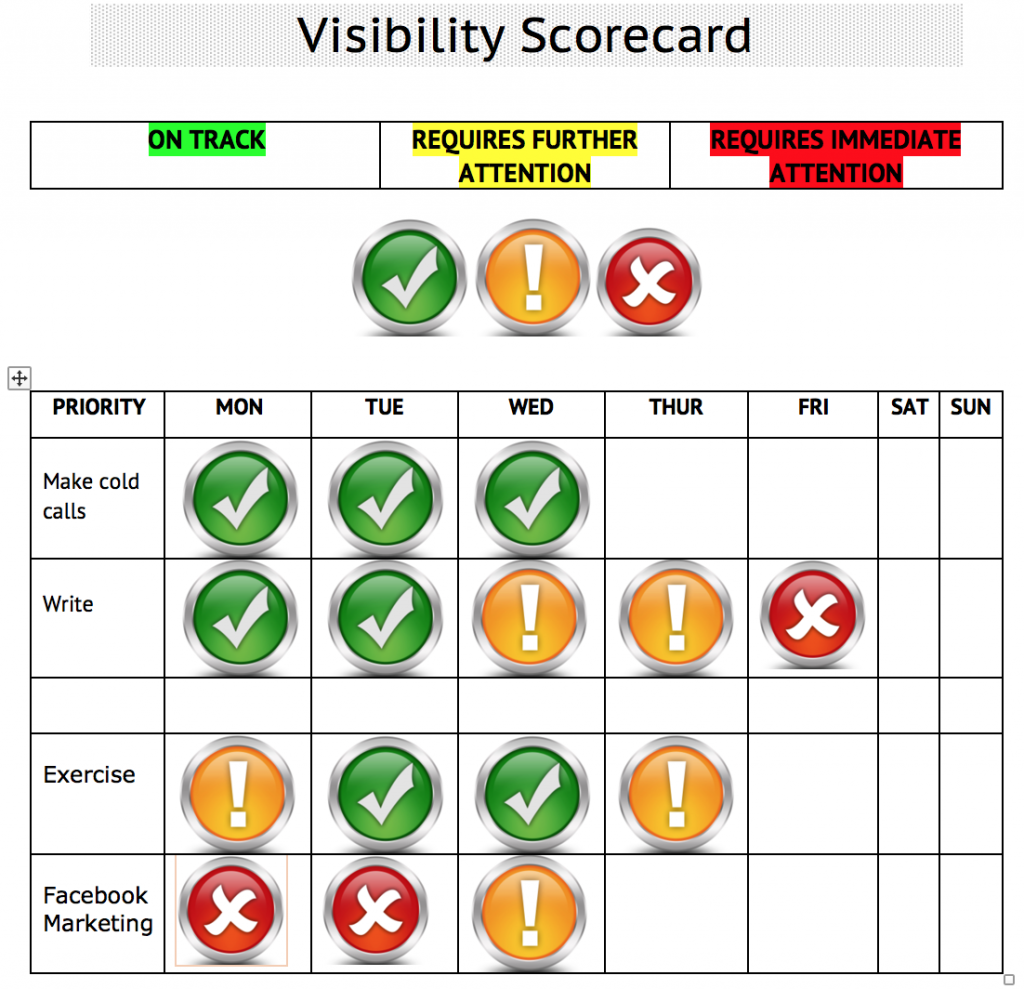Alan Mulally was the CEO of Ford Motor Company from 2006 until he retired in 2014. Fortune Magazine ranked him as one of the top three greatest leaders in the world, behind Pope Francis and Angela Merkel.The year Alan arrived at Ford, the company had posted a record $12.7 billion loss. He used structure as one key element to turn it around. He instituted a weekly Business Plan Review meeting (BPR) with his top sixteen executives. His rules were simple: mandatory attendance, no side discussions, no joking at the expense of others, no phones, and each executive was responsible for developing their own presentation – no delegating it.
He started each meeting the same way and he asked leaders to follow his format. “My name is Alan Mulally. I am the CEO of Ford Motor Company.” Then he reviewed the company’s strategic plan, forecast, and his top 5 areas that needed focus, using a green-yellow-red scorecard to represent the status of each: good-concerned-poor.
Each executive was required to use the green-yellow-red scorecard. They listed their top 5 priorities and graded their performance for the previous week. Most of them agreed and followed the structure. A few did not and eventually left the company.
Just as checklists help surgeons remember to wash their hands, structure such as the green-yellow-red scorecard help executives be transparent and honest with themselves and their colleagues. This visibility encouraged everyone to take responsibility and accountability.
Under his leadership, Ford was the only American major car manufacturer to avoid a bailout fund provided by the government. Ford came back even stronger, profitable, and recaptured its position as No. 2 automaker in terms of US sales from Toyota.
Create your own BPR.
- List your top 5 priorities.
- Grade yourself at the end of each day.
- Share your week’s results with another person.
- Practice this for 30 days.
Your relentless focus, visibility, and accountability gets you the results you want.
What gets measured improves.





